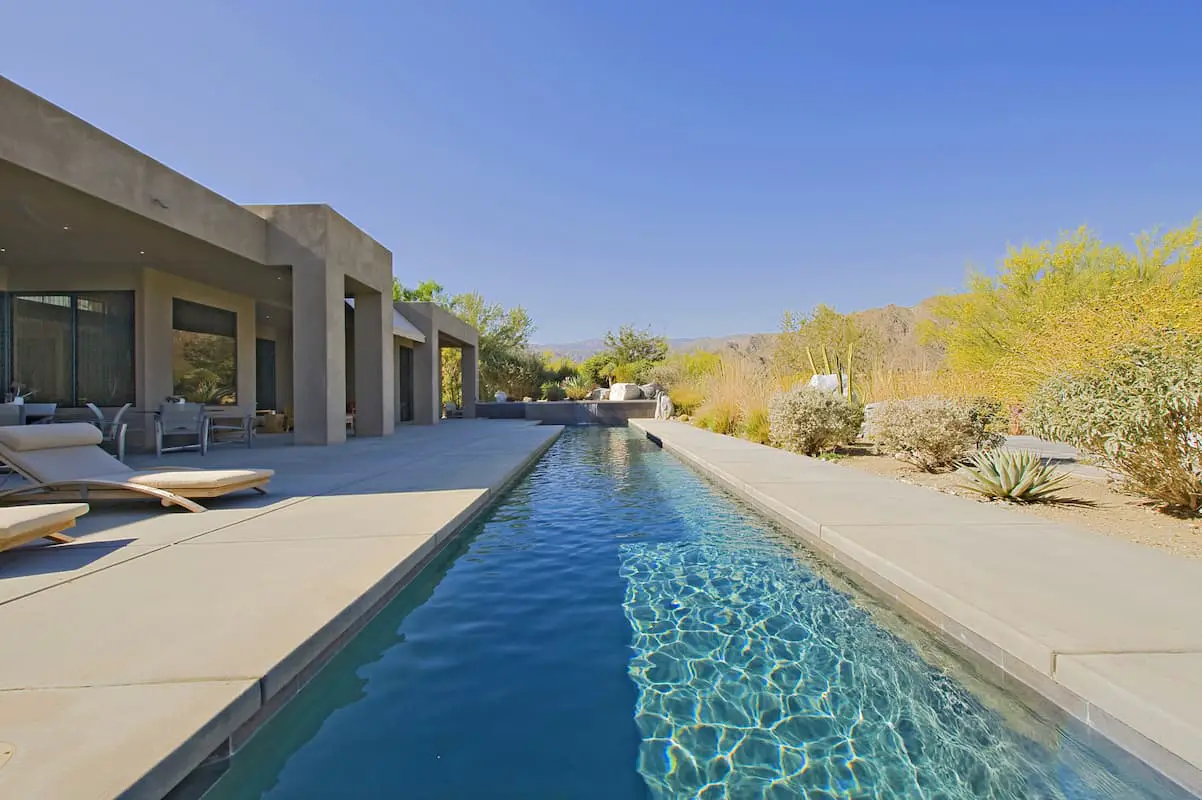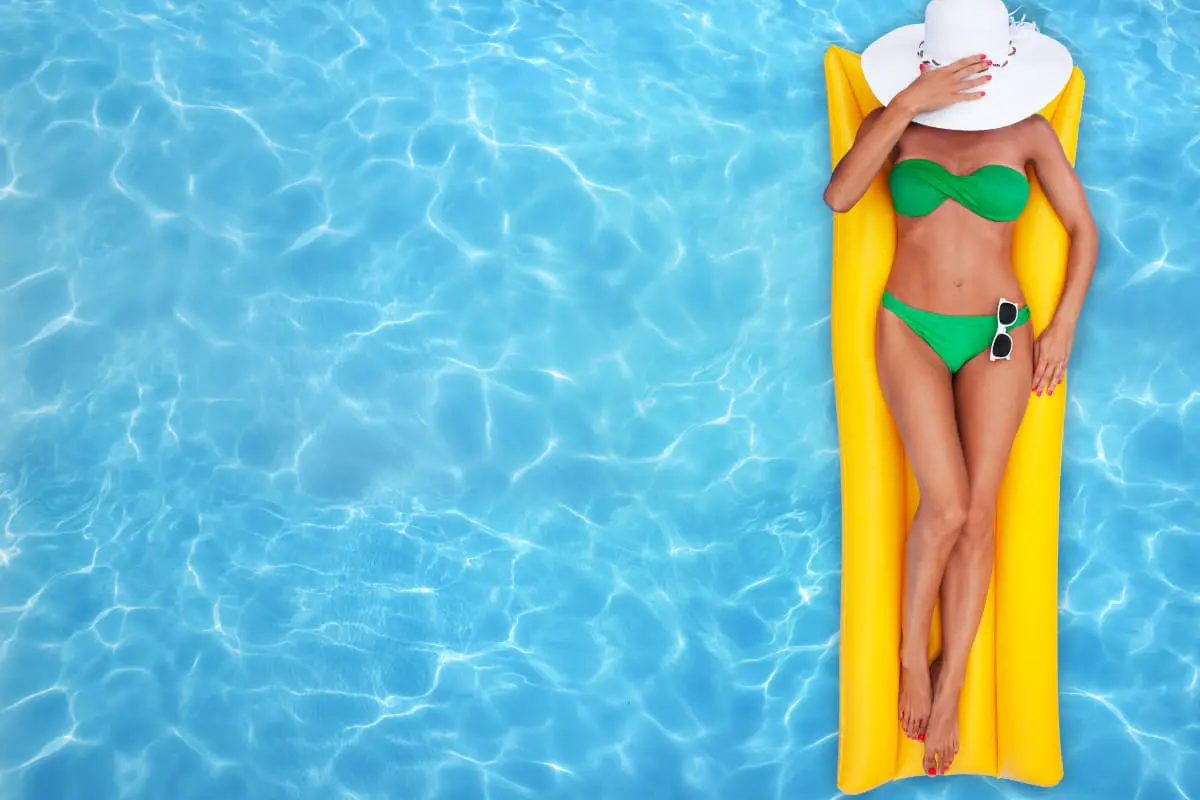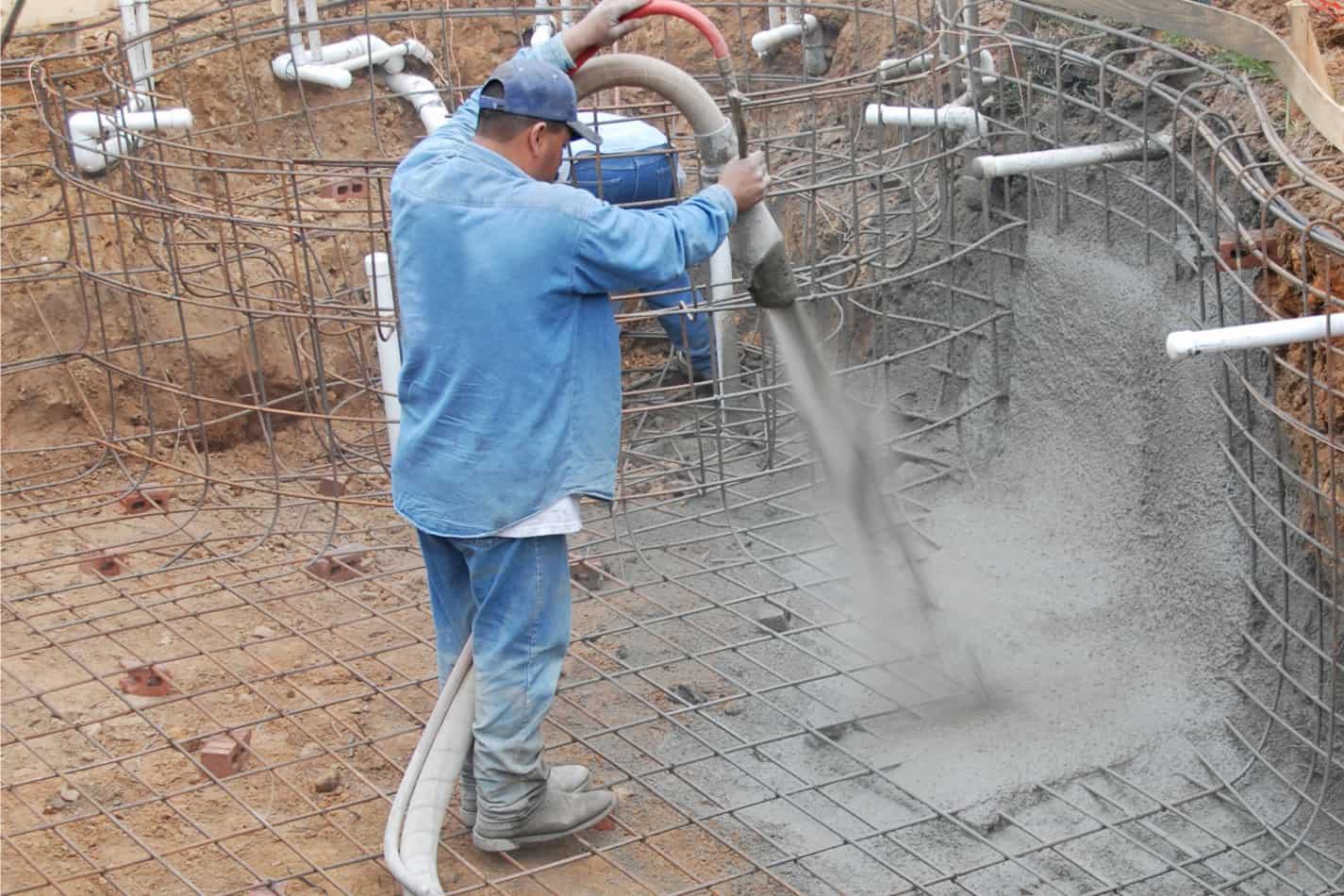What is a Lap Pool Standard Dimensions and Cost?

As an Amazon Associate I earn from qualifying purchases.
If you are looking for a convenient way to get a bit of a swim workout in the comfort of your backyard; a lap pool might be an amazing option for you. If you are looking to get a lap pool you might be wondering, what are the dimensions of a lap pool and what do they usually cost?
To build a standard lap pool you will want to have a pool width of around 10 feet wide, which cuts down wave crash along with at least 40 feet long. Though if looking for competition style you would prefer 25 meters in length. A lap pool will not typically be deep with many staying in the 4-10 foot depth range.
Although these are the usual figures related to a lap pool, there are certain things to keep in mind. You should make adjustments based on your needs and available space.
You could also look into some alternatives. I’ll explain all the details here so you can come out of reading this article with a clear idea of the whole scenario and what you should do.
Learn How to Manage Your Pool and Hot Tub
Frustrated trying to keep your pool clear? Feeling confused about when to add the right chemicals? Get the perfect easy-to-use, illustrated ebook and video course today!
The Standard Dimensions of a Lap Pool
Lap pools are very different from recreational pools. Where other types of pools are usually made with a large space with various shapes, Lap pools are usually in confined small spaces.
Lap pools provide swimmers enough space to get a workout through swimming or to do swim practice. The lap style practicing is what the “Lap” in “Lap Pool” refers to.
Lap pools are small and rectangular. They usually have just one or two depth layers. They are made to resemble the conditions of swimming space in a competitive swimming pool.
These lap pools fit in small backyards with only 25 to 40 feet of area to spare. This is highly convenient for swimmers or people looking to get a workout through swimming.
What are Standard Lap Pool Dimensions:
Length
There isn’t a set length for a lap pool. You need enough length where you can get enough strokes without doing too many turns.
Competitive pools are 25 meters or 82 feet, some are 50 meters or 164 feet. You most probably do not have that much length available in your backyard or wherever you want to install the lap pool.
So, lap pools are usually 30 to 40 feet. Depending on how much space you have at your disposal feel free to make adjustments. Going below 25 feet might be a bit too much so you should keep that in mind. 40 feet will give you a proper workout.
Width
A competitive pool is divided into rows for every swimmer to swim. Each row is 2.5 meters in width. Which is about 8.2 feet. You will need your lap pool to be a bit wider than that.
Swimmers generate a motion of waves when swimming which can create turbulence if the pool is too narrow. The wider the pool is the less turbulence there is.
A common lap pool is over 8 feet in width. Somewhere around 10 feet of width is the sweet spot. Although, as I have mentioned before, you can make adjustments based on your available spaces. All widths from 8 to 12 feet are very common.
Depth
Similar to width, depth is also vital in controlling turbulence. If your pool is too shallow the turbulence will make swimming very problematic.
Competitions require pools to be more than 2 meters deep, preferably 3 meters. Lap pools are not that deep, they are most commonly 4 feet deep. 6 feet deep in one section if diving is a requirement.
What is the Cost of a Lap Pool?
The average cost of a lap pool is around 40 thousand dollars. But depending on your budget you could spend much more. Some portable lap pools cost under 10 thousand. If you are in a pinch you can get those but they will not offer the best experience.
The cost for a lap pool will be in the 40k-60k range to be put in fresh into a new home. Though if you cut length and build a 40-foot long lap pool you could cut this cost down to 30k.
A decent lap pool starts somewhere around the 30-thousand-dollar mark. You can get one that works for you very well under 35 thousand dollars and be content with the quality of the build.
On the higher end of the spectrum, you can go upwards of 50 or even 60 thousand dollars. These are very high-quality premium lap pools suitable for even Olympic-level swimmers to practice in.
The installation cost isn’t the only cost of a lap pool though. The upkeep and maintenance require money too. Albeit not as much as a large size recreational pool, somewhere around 2000 USD every year.
Endless Pool Vs Lap Pool – Which Is Best for You?
The alternative to a lap pool is an endless pool. What is an endless pool you ask? Well, it is a pool even smaller than a lap pool. So, how is it endless?
An endless pool is equipped with a pump that creates water currents in a confined space. This water current pushes you back while you swim forward, making the pool endless.
In an endless pool, you can continuously swim without ever making a turn. The continuous current makes this very small pool the biggest pool you will ever swim in. If your main goal is to practice swimming and get a swim workout then endless pools offer a ton of value.
Endless pools are very small. Usually, a single swimmer’s endless pool is about 15 feet in length and 8 feet in width. For that size of the endless pool, the recommended area needed for installation is 18 feet by 10 feet.
While a lap pool can fit in your backyard, an endless pool can fit in a space even smaller than a garage. So, if you do not have enough space in your backyard, or simply do not want a portion of your backyard to be covered by a pool, the endless pool is the way to go for you.
The amazing thing about a mechanically generated water current is that you can very easily adjust the speed. You can practice with hard or easy waves; however, you wish or your training regimen requires.
An endless pool is also cost-effective. Even the most high-end models of an endless lap pool cost under 40 thousand dollars. Average models of endless pools cost around 15 to 20 thousand. Which is a lot less than what a lap pool would cost.
The upkeep and maintenance cost of an endless pool is also obviously less than a lap pool. A lower quantity of water means a lower amount of energy needed in heating and a lower amount of cleaning required.
Among the downsides of an endless pool is that you would not be able to do dive practice or wall pushes. Other than that, an endless pool provides the most bang for the buck when it comes to personal practice pools.
Final Thoughts on Lap Pools, Dimensions, and Costs
In this article, I talked about the standard dimensions of a lap pool and what they usually cost. I also explained the adjustments you can make.
In addition to lap pools, endless pools are viable and, in many cases, maybe a better alternative to lap pools. I hope all of this helped you make the right decision for you.
Thanks for reading till the end. I hope I was able to be of some help. Hopefully, this article helped answer what are the dimensions of a lap pool and any other questions you had regarding this topic.
I wish that you are able to make the decision that is right for you. Farewell till next time, and happy swimming!


